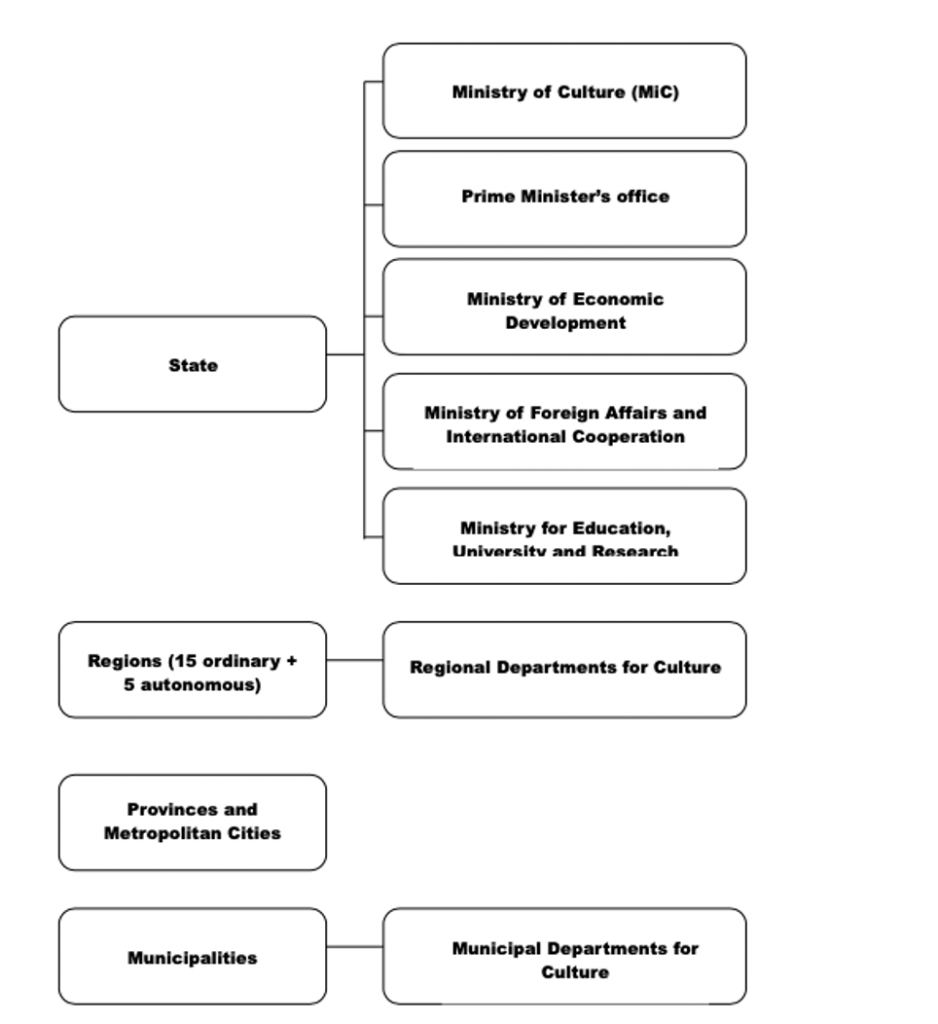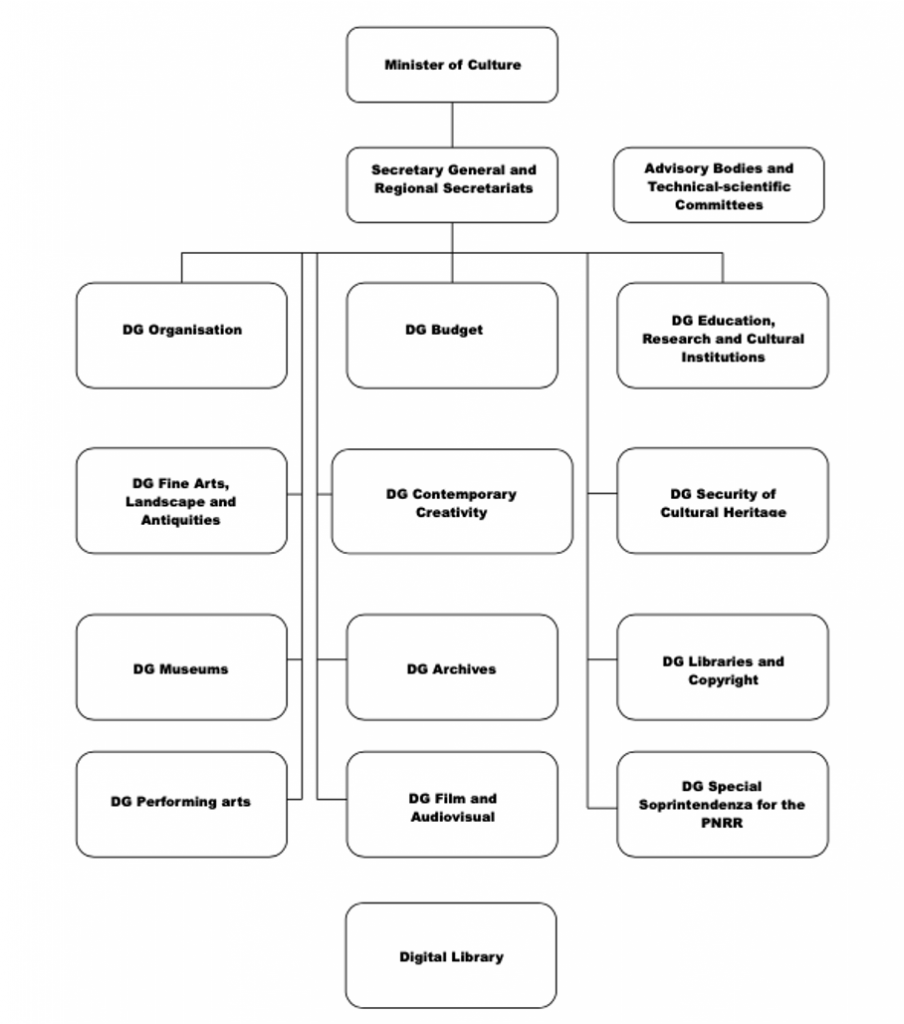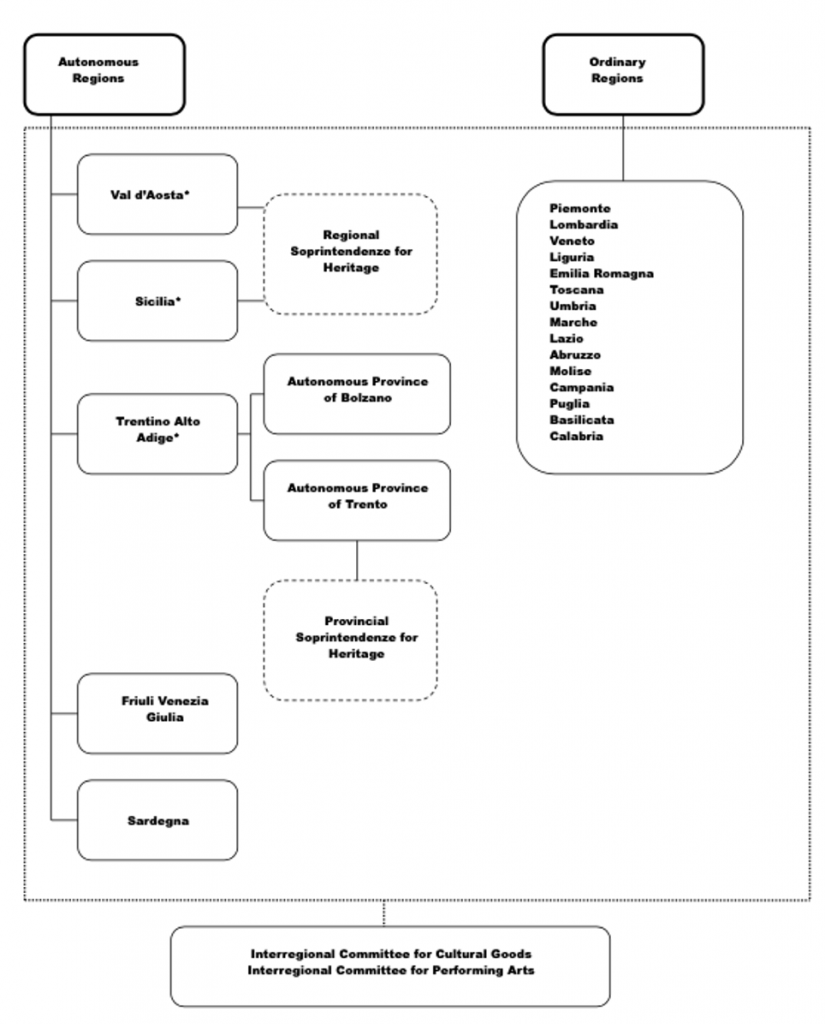Chart 1 provides a schematic overview of the organizational structure of cultural administration in Italy at different levels of government.
Regarding the relationship between the national and sub-national levels, the Constitution guarantees both local self-government and the subsidiarity principle. It gives indications on the exclusive competencies of the State, concurrent competencies, and exclusive competencies of the Regions. Residual competence is vested in the Regions.
Chart 1: Institutional structure of cultural administration at different levels of government

In Italy four levels of government – State, Regions, Provinces and Municipalities – share responsibilities in the cultural field, although the most important administrative and legislative functions still lie with the State.
Chart 2 shows the organisational structure of the new Ministry of Culture (MiC) provided for by the Decree of the President of the Council of Ministers 123/2021[1].
Chart 2: Institutional Structure of the Ministry of Culture

As shown in Chart 3, all 20 Italian Regions have regional departments for culture and special responsibilities for heritage are entrusted to the autonomous Regions of Valle d’Aosta, Trentino-Alto Adige and Sicily.
Chart 3: Autonomous and ordinary Regions in Italy

[1]Source: https://media.beniculturali.it/mibac/files/boards/be78e33bc8ca0c99bff70aa174035096/DECRETI/PDCM/PDCM%20del%2024%20giugno%202021%20n123.pdf

Comments are closed.